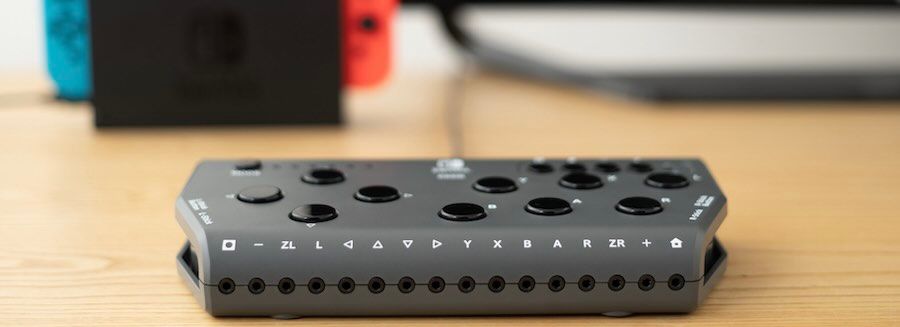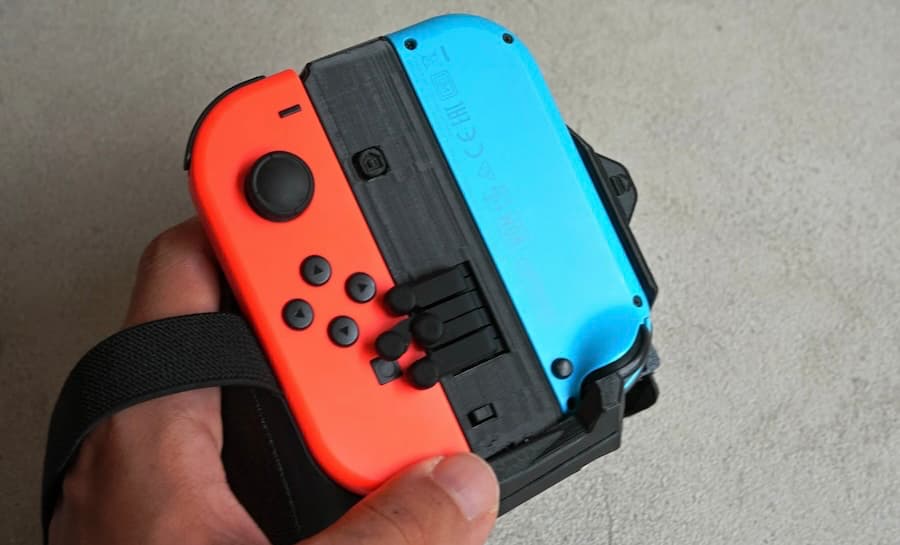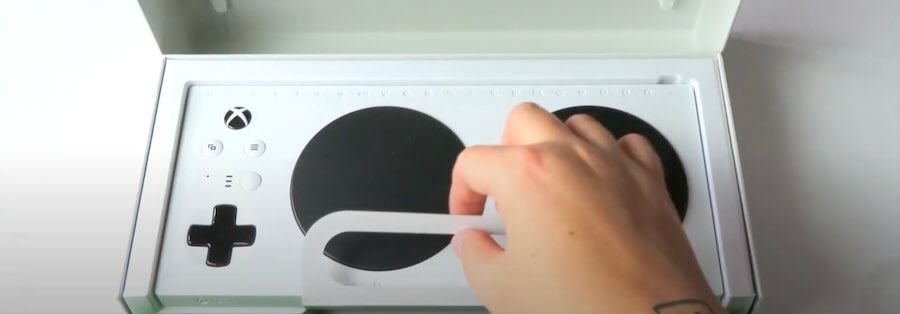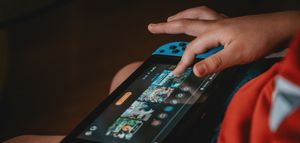An accessibility advocate shares the things we need to see in Nintendo's next hardware effort to best support disabled gamers.
While not currently announced in any official capacity, an increasing number of rumours are suggesting that a successor to the Nintendo Switch is releasing soon.
We don’t know much official about a potential Nintendo Switch 2, but all rumours currently seem to suggest that, at the very least, it will maintain the same basic concept as the current Nintendo Switch — releasing as a portable system which can be docked to play games on the TV at a higher resolution. It seems likely it’ll still be a hybrid console handheld, with detachable controllers similar to the Joy-Con, albeit with some potential additions or modifications.
Working on this assumption that a Nintendo Switch 2 is coming and will maintain the same basic hybrid form factor as the current Switch, I wanted to take some time to have a look at the state of accessibility on current Nintendo Switch hardware, and talk about some of the things that I think we need to see from a hypothetical Switch 2 to improve Nintendo’s level of accessibility support for disabled gamers, and bring them more in line with PlayStation and Xbox.
Accessibility controller support on day one
When the Xbox Series S and Series X released toward the end of 2020, the pair of consoles made gaming accessibility history by being the first consoles to ever release with official accessibility controller support available on launch day.

Having accessibility controller support available day one for a new console is really important. It allows all gamers that are excited for next-gen games to be able to hop in on day one — and not have to wait weeks, months, or even years to get in on the hype.
While I don't expect Nintendo to announce and release their own accessibility controller in time for the release of the Switch 2, if nothing else I want Nintendo to ensure that the Hori Flex, a third party accessibility controller for the current Nintendo Switch, is supported on launch day for the upcoming Switch 2. This would not only ensure that disabled players could pick up the system on launch day, but also ensure those who've already invested in a Hori Flex don’t have to shell out down the line for a new expensive accessibility controller needlessly.

That said, if Nintendo were to announce and release their own accessibility controller for a potential Switch 2, that might push the company to have to address some of their console’s existing inaccessible elements. Currently, Nintendo can get away with the fact that, for example, several Switch games such as Super Mario Party feature mandatory motion controls, and cannot be played by someone using a Hori Flex accessibility controller, because it’s a third party device.
If Nintendo were to release their own proprietary accessibility controller it might force them to get creative about offering motion control alternatives to players in their games, or to find ways to emulate motion controls using more accessible input devices.
Support for 'Copilot' mode
Copilot mode is a system level feature on Xbox consoles that enables two controllers to be registered as a single player — allowing for a variety of accessibility setups that would not otherwise be possible for disabled players.
Players can use a standard Xbox controller alongside an Xbox Adaptive Controller, or two regular Xbox controllers as part of one setup, even independently remapping each controller to better lay out hard to reach buttons.
Controller Assist was made available to PS5 owners in 2023 and is functionally very similar, with the exception of not allowing independent controller remapping or reorientation of analogue stick directions for players who might need to hold a controller sideways or upside down.
With the release of a potential Switch 2, I’d really like to see Nintendo catch up with the competition on this one and support an equivalent of Copilot mode in their next system.
As great as it is that the Hori Flex accessibility controller exists, the device doesn’t ship with analogue sticks as default. Currently, disabled gamers need to buy third party USB inputs to play 3D Switch games on the Hori Flex, but offering Copilot mode functionality would allow integrating existing controllers into an accessible setup more easily.
Catch up with your competitors and make this feature an industry standard.
An official, mass produced, one handed controller grip
Currently, there are creators online that are 3D printing to-order grips that allow a player to comfortably hold two Joy-Con controllers in a single hand, and access all of the controller's buttons one handed.

These are expensive as they're made to order, but this could be an area where mass production by Nintendo could help make these more affordable, and make one handed play on a potential Nintendo Switch 2 more readily accessible.
The Switch’s current Joy-Con being small, and separated from each other, makes reconfiguring their positions with a simple plastic mount really simple. A one handed controller grip wouldn’t be too expensive to produce, and could go a long way toward positioning Nintendo as forward thinking on accessibility.
Accessibility information on the eShop
Today, on both Xbox and PlayStation’s digital storefronts on console, disabled players can find out accessibility information on certain video games without having to look up external accessibility reviews, and this is something I am incredibly happy about.
On both systems, a game’s developer can apply to have tags listed on their game’s store page that tell players prior to purchase that their game contains features from a list of common accessibility features.
Nintendo is the only one of the three major console makers to not feature any form of accessibility tags for games on their online storefront, and if the eShop for the Nintendo Switch 2 could implement this type of support, this would become an industry standard, something I've long been pushing to see happen.
Make sure disabled gamers know before purchase if a game is going to have features that they need to be able to play your game.
Accessible packaging
Looking at the most recent generation of home consoles, both Xbox and PlayStation have started dipping their toes into accessible packaging considerations, at least when it comes to their accessibility controllers.
The Xbox Adaptive Controller and PlayStation Access Controller both feature large loops to help make stickers on boxes easier to remove, a lack of cable ties on components in boxes, and other considerations designed to ensure disabled gamers require minimal assistance to open their new accessible devices.

Accessible packaging considerations are slowly becoming more common in the gaming space, and it’d be great to see Nintendo learn from these examples and integrate accessible packaging considerations directly into the box for the Nintendo Switch 2. Accessible packaging isn’t just for accessibility controllers.
System wide colour blindness filters
This one’s nice and simple. While automated colour blindness filters are not a great accessibility fix for colour blind gamers, they can in a pinch make some games playable that hadn't considered colourblindness when they were originally being designed.
Having system level filters to try and make certain colours more discernible from each other is something that the other console manufacturers are already doing, and something that Nintendo is behind the curve on adopting.
High Contrast support
High Contrast Mode visuals were first popularised by The Last of Us 2, and allow players to turn a game's world greyscale, while highlighting important interact-able elements in bright contrasting colours.
This feature has since started to pop up in non PlayStation titles, such as the recent Saints Row reboot, The Calisto Protocol, and Call of Duty, showing that PlayStation doesn’t have exclusive ownership of High Contrast Mode — a feature that I think is all the more useful on handheld consoles.
With handheld device screens smaller than a TV, seeing fine details can be more difficult on a handheld for some blind or partially sighted gamers. High contrast Mode support on small screen games helps make up the difference, and is a place where this tech could be really, really impactful.
While not something that technically requires a new generation of Nintendo hardware to implement, I’d love to see Nintendo in the near future start offering High Contrast Mode support in their first party releases.
Better first party accessibility design, settings, & messaging
Nintendo is, without a doubt, the weakest of the three console manufacturers right now when it comes to making sure that their first party video games are accessible, and that they're communicating accessibility information in advance of release to disabled players.
Nintendo frequently releases video games with unavoidable motion controls, games with basically zero accessibility settings options, games with mechanics that require hearing to engage with, and often lack even basic standards across their titles.
With Xbox and PlayStation today, I can pretty confidently rely on a certain set of features to appear across most titles that their studios release, and some knowledge of accessibility settings a week or so before the game releases, at the latest. I know a PlayStation published game will probably support High Contrast visuals, accessibility presets for common disability categories, and options to reduce button mashing inputs in games. I know an Xbox first party game will at the very least likely support customisable subtitles, difficulty modes, and options around text to speech support in menus.
Nintendo’s biggest issue when compared directly to Xbox and PlayStation today is one of inconsistent options and messaging.
You can’t rely on a Nintendo game to be accessible in the same way you might an Xbox or PlayStation title, and you certainly can’t count on them making that information known in advance of release.
While there are software and hardware accessibility changes Nintendo could implement with a Nintendo Switch 2, what the company really needs is a ground up change in how they think about accessibility in their core game design discussions.
Nintendo feels like it’s a noticeable step behind its closest competition in terms of acknowledging the direction the games industry is moving in terms of accessibility standards. Beyond making any one specific change, Nintendo really need to fundamentally get on board with a way of thinking that puts accessibility itself as a core pillar they consider worth the effort to work on.


